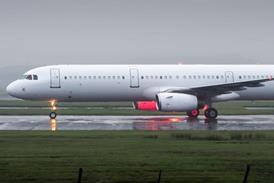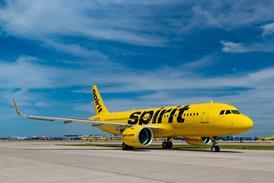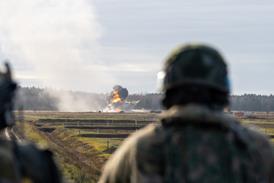Russia faces a pilot shortage because of poor pay rates, long working hours and the lure of foreign carriers. And the biggest risk is to safety
The Russian domestic airline industry is in its fourth year of growth, following years of first shrinkage after the end of the Soviet era and then more or less stagnating. News of the turnaround, including 19.6% passenger traffic growth in the first half of this year, may sound good, but like growing airline sectors in the West, Russia's commercial air transport industry faces competition of an intensity it has never seen before, which puts pressure on staff and other costs, according to a comprehensive study just published in the Moscow Times.
This combined industry growth and competitive pressure is leading - in Russia and western Europe - to a shortage of suitably trained pilots. In Europe's fastest-growing sector - low-cost airlines - the carriers have grown up in an environment and business culture that gives them some flexibility in designing strategies to deal with the problem, and the commercial pilot training sector is also flexible, having the capacity to expand rapidly when demand becomes clear. The West also has a small pool of pilot reserves as a result of the economic downturn that had begun shortly before the 11 September 2001 terrorist attacks in USA, which then steepened the airline industry slump. In Russia, however, this flexibility is not built in to the system structure, many parts of which, including training, are the same as they were in Soviet days, and they have been allowed to atrophy.
The recent Moscow Times front page article has surprised many Russians, who may have suspected that a potential problem existed, but not how urgent it was becoming. In common with Western experience, the Russian military is no longer the big supplier of trained pilots to the airline industry that it used to be, and it faces its own problems recruiting potential pilots and retaining them when they are fully trained.
Both Russia and western Europe face difficult challenges in providing not merely enough pilots with licences that signify a minimum standard, but pilots who are fully trained for multi-crew jet operations. At present, student airline pilots in Russia, like other professionals, enjoy state-funded training - a special budget has traditionally been allocated separately from that for academic education. But this may change. The government is considering giving the professional training task to the education department, and no-one yet knows what effect that will have if it occurs. Many fear it may be the beginning of the end for free professional training.
Meanwhile, even with the free basic training system, the pressures of airline competition in Russia, as in western Europe, are changing the nature of the pilot's lifestyle and the rewards the job has traditionally brought, and the potential pilots are just not turning up at the flying schools. At the same time Russia is feeling the effects of the global economy, and skilled pilots are leaving for foreign airlines that offer pay four or more times better than the average $9,500 a year Russian pilots can expect at present. Meanwhile, the Cockpit Association of Russia says that since 1991 the age of the average Russian airline pilot has climbed from about 40 to 47, and he or she works more flying hours for the same pay, but often with reduced benefits.
European low-cost carriers may face the threat of crew shortage problems, but they have more choice of how to resolve them. Faced by the formidable market competitive pressures, however, they must not - as airlines often have done - pretend that the problem does not exist until it is already harming them.
Russia has a way of finding different solutions to those the West might choose, but at present the problems its airline industry faces are the product of the uneasy juxtaposition of a Western-type market-led operating arena supplied by a threatened heritage system for training its skilled professionals. This is a fearsome combination.
There are implications for safety here: the high average age, increased pressure to work long duty periods and lower crew morale. Russia's airline system - under the old Aeroflot umbrella - had an excellent safety record toward the end of the Soviet era, but when the aviation oversight infrastructure that supported it collapsed in the wake of the Perestroika changes, safety went rapidly downhill.
Now a restructured safety oversight system has regained its grip, and the major Russian passenger carriers including the new Aeroflot have recovered again something close to the high standards they used to achieve. It would be a pity to jeopardise that.
Source: Flight International























